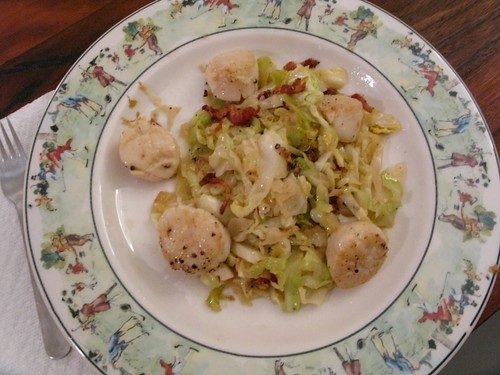The Recipe Tweaker
This morning I tweaked a recipe and I wasn't even cooking. I was reading Twitter (as I do every morning after reading The New York Times, Google Reader, and checking Facebook) and I saw my friend Elise Tweet about her beet hummus. I clicked to the recipe (see here) and then I Tweeted to her: "Have you considered adding horseradish to your beet hummus? I wonder if that'd work?" She Tweeted back: "love the idea of adding horseradish to the beet hummus. yummmmmmm." That's what's known as a Tweet tweak and it's just one example of the many tweaks I've been tweaking, lately, in my newfound life as a recipe tweaker.
This tweak streak started a few weeks ago when Craig and I threw a little party for our February birthdays and, being the person that I am, I bought way too many lemons and limes. When the party was over, I used the lemons to make lemon sherbet and the limes? What would I do with those limes? I decided to make a favorite cake--The Barefoot Contessa's lemon cake (recipe here)--and to substitute the limes for the lemons. And thus was born the Leftover Lime Cake:
Everyone who ate it ooohed and ahhhed and asked for the recipe. "It's not a recipe," I explained, "it's a tweak." They looked at me blankly. Such is the life of a recipe tweaker.
The next tweak I tweaked was an idea I got after reading your comments on my Heaven & Hell Cauliflower Pasta post. Brenda, a commenter, asked: "The fennel seeds are used whole? Not ground? Not toasted?"
Well, yes, Brenda they're normally used whole. It's not like I even came up with that, it's in the original Zuni Cafe recipe, but your comment got me thinking. What if I did toast the fennel seeds first? And what if I then ground them up in a coffee grinder?
Behold the best Heaven & Hell Cauliflower Pasta I've ever made:
As always happens when you toast and grind a spice, the fennel flavor here was much more pronounced. I also took it easier on the salt this time around after some of you complained that the dish was too salty (a strange complaint, I think, since--besides the anchovies--you're always in control of how much salt you add. It's not like I gave salt amounts!) But still, I'd always been too un-Bloomberglike in my salting of that particular dish, so this time I took it easy. And Craig said: "This is the best version of this you've ever done."
Take a bow, recipe tweaker.
Not all of my tweaks, however, have proved successful. Sometimes what I define as a "tweak" is really just me being lazy. I was excited to make the scallops in Thomas Keller's "Ad Hoc at Home." I followed his instructions to brine them in salt water:
But, when it came time to cook them, I ignored his instruction to use clarified butter (which would take a little time to make) and, instead, "tweaked" the recipe with olive oil as the new fat. The resulting scallops--which were supposed to be golden brown and crusty--were sad, soggy, unseared specimens (you can see them at the top of this post).
But all wasn't lost. I "tweaked" the recipe so instead of serving them with whatever it is Thomas Keller wants you to serve them with, I served them on a bed of cabbage cooked with bacon and wine (a recipe I learned from Rebecca Charles when we made our fish musical. Recipe here.)
So even a bad tweak has a silver tweak lining. And that's the point, isn't it? The beginner cook cooks nervously, makes mistakes and follows a recipe like it's the written word of God. The intermediate cook might make a change here or there, but does so cautiously. It's only when you make big, bold changes--swapping limes for lemons, grinding and toasting your spices, ignoring the Mighty Keller--that you can call yourself a real cook. AKA: a recipe tweaker.




